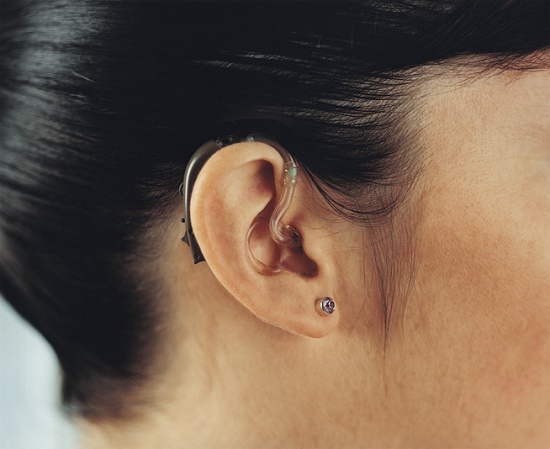
Have you ever had trouble hearing in a crowded room or restaurant but can hear without any problem at home? Do you have particular difficulty hearing higher-pitched voices or TV dialogue?
If so, you might have hearing loss, and hearing aids might be able to help.
But how do hearing aids work exactly? Are they simple amplifiers, or something more complicated?
This week we’ll be exploring how hearing aids work and how they are a bit more sophisticated than many people realize. But first, let’s start with how normal hearing works.
How Normal Hearing Works
The hearing process starts with sound. Sound is essentially a kind of energy that travels in waves, like ripples in a pond. Things generate sound in the environment when they produce vibrations in the air, and those vibrations are ultimately caught and sent to the ear canal by the outer ear.
Just after passing through the ear canal, the sound vibrations strike the eardrum. The eardrum then vibrates, creating and amplifying the original signal which is then transmitted by the middle ear bones to the snail-shaped organ of the middle ear referred to as the cochlea.
The cochlea is full of fluid and very small nerve cells known as cilia. The vibrations transmitted from the middle ear bones shake the fluid and stimulate the cilia. The cilia then conduct electrical signals to the brain and the brain interprets those signals as sound.
With most instances of noise-induced hearing loss, there is damage to the cilia. So, the inbound signal to the brain is weakened and sounds seem quieter or muffled. But not all frequencies are equally weakened. Generally, the higher-pitched sounds, such as speech, are affected to a greater degree.
In a raucous setting, like a restaurant, your ability to hear speech is impaired because your brain is receiving a weakened signal for high-frequency sounds. Simultaneously, background noise, which is low-frequency, is getting through normally, drowning out the speech.
How Hearing Aids Can Help
You can see that the solution is not simply amplifying all sound. If you were to do this, you’d just continue to drown out speech as the background noise becomes louder relative to the speech sounds.
The solution is selective amplification of only the frequencies you have difficulty hearing. And that is only possible by having your hearing professionally evaluated and your hearing aids professionally programmed to enhance these specific frequencies.
How Hearing Aids Precisely Amplify Sound
Modern day hearing aids consist of five interior parts: the microphone, amplifier, speaker, battery, and computer chip. But hearing aids are not just straightforward amplifiers—they’re intricate electronic devices that modify the attributes of sound.
This occurs via the computer chip. Everyone’s hearing is one-of-a-kind, like a fingerprint, and therefore the frequencies you need amplified will vary. The incredible part is, those frequencies can be found exactly with a professional hearing test, technically known as an audiogram.
Once your hearing professional has these figures, your hearing aid can be custom-programmed to enhance the frequencies you have the most difficulty with, improving upon speech recognition in the process.
Here’s how it works: the hearing aid picks up sound in the environment with the microphone and transmits the sound to the computer chip. The computer chip then converts the sound into digital information so that it can distinguish between different frequencies.
Then, based upon the programmed settings, the high-frequency sounds are enhanced, the low-frequency background sounds are suppressed, and the refined sound is presented to your ear via the speaker.
So will your hearing return perfectly to normal?
While your hearing will not entirely go back to normal, that shouldn’t prevent you from attaining substantial gains in your hearing. For most people, the amplification offered is all they need to understand speech and indulge in effective and effortless communication.
Think about it in this way. If your eye doctor told you they could enhance your vision from 20/80 to 20/25, would you forfeit prescription glasses because you couldn’t get to 20/20? Of course not; you’d be able to function perfectly with 20/25 vision and the gain from 20/80 would be substantive.
Are you set to see the gains you can achieve with modern hearing aids? Give us a call today!
